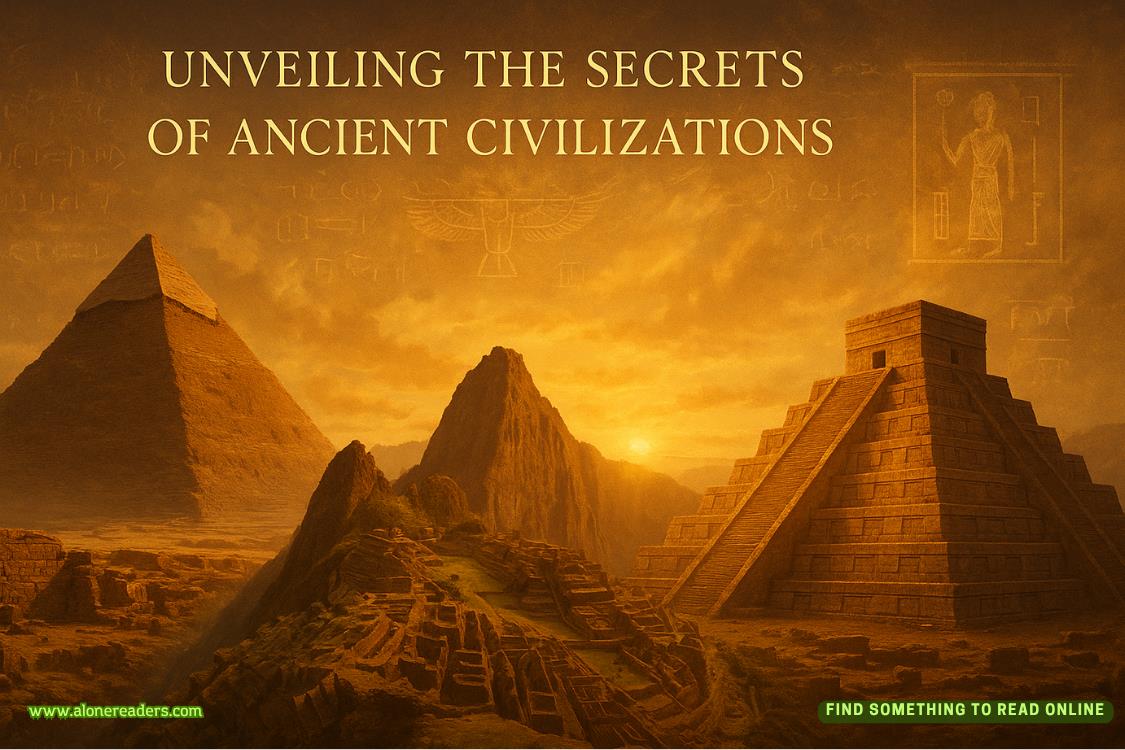Page 28 of Tomb of the Sun King
Still, it was hard to imagine that any group of workers would look this relaxed if someone like Jacobs was lurking about.
Somewhat reassured, but still wary, Ellie let her attention drift to the temple itself while Mr. Mahjoud chatted with the staff.
Beyond the antechamber lay another roofless room, this one framed by a row of tumbled columns. The pieces of debris were all neatly tagged and labeled, the fragments set into tidy piles.
More of the walls had survived here than in the antechamber, including some limestone panels covered in carved text and images. A worker squatted comfortably beside one of the larger murals, making a neat, careful copy in his sketchbook. The piece was done in bas relief, with the surrounding stone shallowly cut away from the image.
The heads of the larger figures on the panel were lost, as they fell above the level of the surviving portion of the wall. Smaller forms had survived mostly intact, save for a few places where details had flaked away.
The more diminutive people were kneeling with their heads bowed in supplication. Their arms were bound and linked together with ropes. From the distinctive curls of their hair and the fact that their faces were bearded, Ellie suspected they represented members of some Semitic tribe that the great general Horemheb had conquered.
She pulled her attention from the bas relief to the worker’s sketchbook. His page was lined with neat rows of the hieroglyphs that he had already copied from the wall. Ellie’s mind instinctively leapt to translate them, though the knowledge was somewhat rusty. She hadn’t found much cause to read hieroglyphs while working at the Public Record Office.
“Flame… Isis… speaks…” she read.
The writing system of the Ancient Egyptian language combined ideograms—symbols meant to represent entire concepts—with symbols that stood for the phonemes of ancient words… at least, in as much as anyone knew what those had been. The sounds of the Ancient Egyptian tongue had been lost for centuries, and scholars were still struggling to reconstruct it.
“Surround…” Ellie muttered, lifting her eyes from the worker’s sketchbook to pick out the relevant section from the text on the wall. “Hidden… tomb…”
“Are you reading those hieroglyphs, Eleanora?” Constance pressed with delighted interest.
“I am trying to,” Ellie retorted, frowning at the symbols, “once I recall what this figure with the stick on his head is meant to be. Oh wait! Not a stick—an ax!”
“Why does he have an ax on his head?” Constance asked.
“Because that’s the sign forenemy,” Ellie replied dismissively as she focused on the text. “It’s meant to be sticking out of his brain.”
“Is it really?” Constance pressed with obvious relish, moving in for a closer look.
“Now then,” Ellie continued, excitement driving her onward. “That would make the whole of it,The Flame of Isis says—I surround the hidden tomb with sand and drive thy enemy away.” She smiled brightly. “How splendid! I am quite certain that’s from one of the later chapters of the Book of the Dead. I wonder if I can remember which one…”
“I see we have done a marvelous job ofwaiting,” Mr. Mahjoud commented blandly.
Ellie turned to see the dragoman approach, followed by an Egyptian gentleman with a neat silver beard and a fine black quftan. A clean white turban crowned his head.
“Mr. Abdelrahman says that Dr. Fairfax went down the shaft,” Mr. Mahjoud reported.
Ellie sparked with scholarly interest. “Shaft, did you say? Do you mean he found the entrance to Horemheb’s actual tomb? But how far have they excavated? Did they survey the entirety or have they been proceeding chamber-by-chamber?”
“Have there been any other recent visitors to the site?” Adam cut in, his tone serious. His eyes were on the doorway while his hand rested on the hilt of his machete.
Mr. Mahjoud exchanged a few more words with the Egyptian.
“No,” the dragoman reported. “Not for the last six weeks, since the tourist season died down.”
Ellie felt a quick wave of relief. “Where is the shaft?”
Mr. Abdelrahman waved toward the next chamber.
Ellie couldn’t see what lay there, as the walls in that portion of the ruins had survived to a height of over ten feet, but it must be the inner and most sacred chapel of Horemheb’s funeral temple—an entirely sensible place for the ancient priests to have situated the vertical tunnel that would lead to the great general’s tomb.
She picked up the hem of her skirts and stalked inside, the others following as Mr. Abdelrahman let out a stream of protests.
The sanctum was smaller than the other chambers. The walls of it rose high and close. There were more surviving bas reliefs here, though Ellie could also see places where the panels of limestone had been sheared off—probably stolen by earlier visitors to Saqqara, like the soldiers of Napoleon who had come here a century before.
On the right side of the room lay a perfectly rectangular hole in the floor, revealed by the removal of one of the paving stones. The opening was clearly a tomb shaft.
“Of course, my beastly brother didn’t write to tell me that he had found this!” Ellie exclaimed. She dropped to her knees at the edge of the hole and peered down. The tunnel descended straight into the rock for roughly ten yards. Someone had left a lantern at the bottom.















